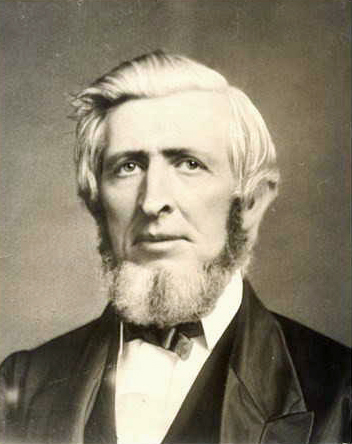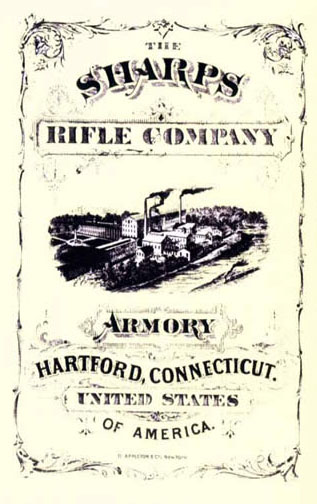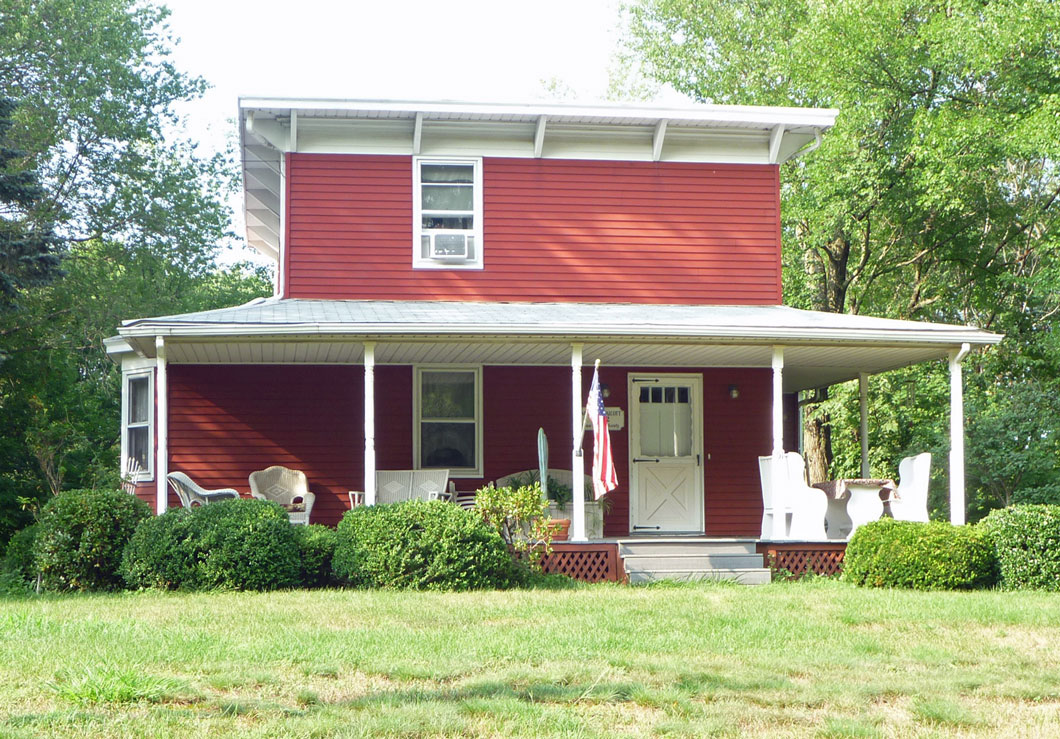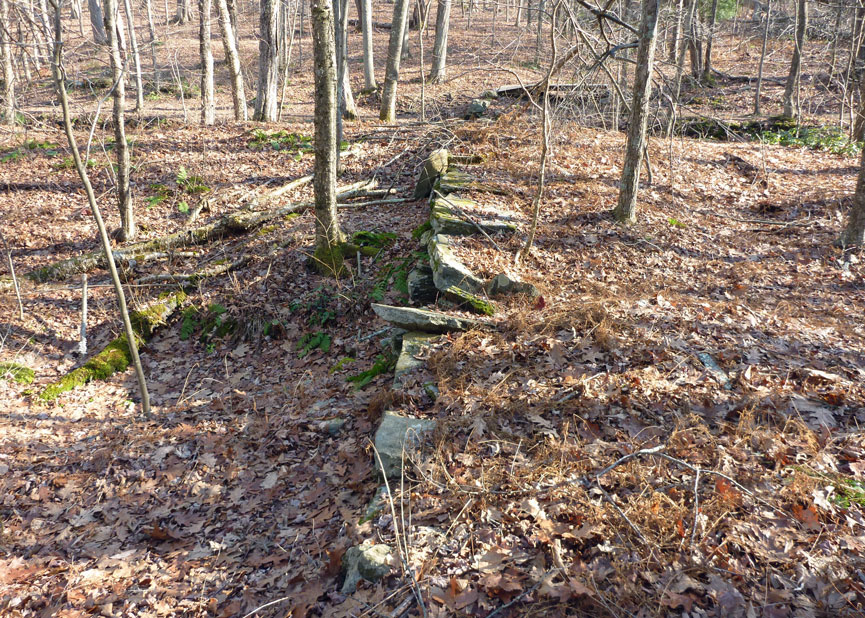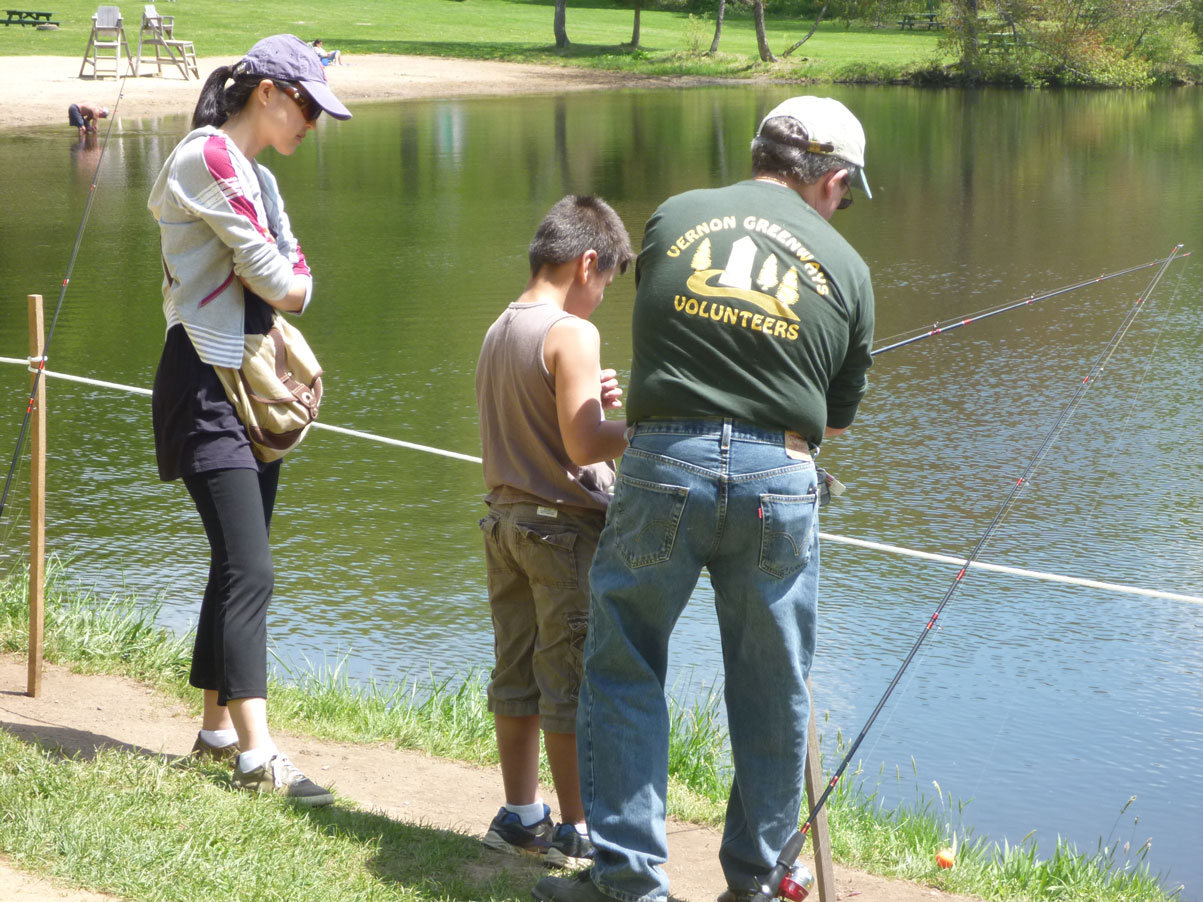 |
| Home | Geography | History | Biology | Recreation | News | Resources |
| Valley Falls Index |
Sharps Trout HatcheryThe most famous person to come to the valley was Christian Sharps, the rifle designer and manufacturer. He was known as the designer of the Sharps Rifle that helped win the Civil War and would gain additional fame in the West. Although his stay here was brief - only four years - his dream of building a trout farm in the cool waters of Railroad Brook and in the shade of Mountain was imaginative. This is the story of creativity, hard work and tragedy.
Christian Sharps (1810-1874) came to the Valley in 1870, shortly after the Civil War. He was a brilliant inventor having developed the Sharps Rifle, which was used extensively during the Civil War and that would play an important role in our Westward expansion. Born in 1810 he developed his famous rifle while working in Baltimore and Philadelphia. What brought him to Connecticut in 1854 was a factory in Hartford producing his rifles, as Connecticut was known for its precision manufacturing capabilities. This was the time of water powered mills and factories, including those in Vernon and Rockville. Although an excellent engineer Sharps was less successful as a business man and by the end of the war no longer owned the company that bore his name. After the war, production of his rifles was dramatically reduced and the Hartford factory closed in 1870, the same year he came to Vernon. New ideas were needed. With factories and mills also using the rivers that powered them for their waste, the fish that we depended on for food a half century earlier were now gone. At the same time cities were growing and there was an expanding market for fish.
One source of fresh fish was the developing trout farm industry, and Christian Sharps believed he could rebuild his fortune by being one of the early investors in this promising industry. But as large and even medium sized rivers were polluted where could he find clean, cold water that trout need to thrive? In Connecticut it meant smaller upland streams. Valley Falls' Railroad Brook had many advantages. The brook begins at the spring-fed pond at Bolton Notch and flows north through a tree covered valley sheltered by the cliffs of Box Mountain. Little sun reaches the valley floor such that it remains cool even in the warmest months. A protected fish farm could be created above the Valley Falls Company's Cotton Mill. Trout farming was very competitive and owners protected their methods. Maintaining privacy was relatively easy at rural Valley Falls. There was also the advantage for shipping the harvest to markets in New York and Boston of the nearby railroad with stations at Vernon Depot and Bolton Notch. This was likely a factor in his choice of Vernon for his farm. So in 1870, at age 60, Christian Sharps used what money he had left to buy 150 acres of the valley. His property extended from Bolton Road across the Valley to the railroad tracks and included Anson Lyman's Valley Falls Farm, but did not include the Valley Falls Company's mill. He had to borrow and mortgage heavily to finance the project. Sharps brought with him his wife Sarah, adult son Charles and a younger son. They did not live on the farm as Sarah bought a house from Nathaniel Talcott with 15 acres on Birch Street at Vernon Depot. Charles would help with the fish farm and Christian also had a bulldog name Tige who helped protect the property. Sharps chose a wooded location upstream from the pond where he dug three small ponds and diverted water from the brook. Above the ponds he built a hatching house and a small house for his helper, who also served as a watchman. It would take several years before the first harvest would be ready for market. Although very secretive about his methods Sharps did grant an interview and tour of the site to a reporter from the Tolland County Journal in 1873 and his article gives us the best surviving description of Sharps' business:
"In order to secure enough of this favorite stream to work out successfully ... Col. Sharps (decided to buy) the Bradley farm....by agreement with the owner of the mill, Col. Sharps has control of the pond. About a half mile south of the mill... a one story cottage has been built ..for the use of the man in charge. There is a hatching house furnished with galvanized iron troughs through which the water is continually kept flowing. ...Choosing of their mates by the males is sometimes a serious business as they fight one another....the females take no part in the strife. In a pool of 2 to 3 rods square and 2 to 3 rods deep, upwards of 1,000 lively fellows... spend their time sporting and jumping about. If his expectations are realized, he will be the largest trout producer in the United States." Sharps had big dreams for his trout farm. He hired away his competition's best people and intended that his hatchery would be the largest in the country producing 500,000 trout per year after the first few years. With just the first harvest he expected to send 300,000 trout to market. Sadly his vision was not to be fulfilled. The scourge of the late 1800's was tuberculosis. Many soldiers returned from the war with the disease and infected family members. Sharps too came down with the disease during the Civil War. After his first harvest in 1874 he planned to winter in Florida and get the rest that was so important for controlling the disease. But just before the harvest was to begin he went to bed one night in March at his home in Vernon Depot feeling fine and optimistic. But about 10 p.m. his lungs hemorrhaged and he was dead within 15 minutes. His passing was carried in newspapers across the country: "Christian Sharps, like most inventors, never derived from his inventions the pecuniary share of which he was justly entitled. A man of extraordinary intelligence in nearly all things, he was yet not exactly what is called a ?practical man.' Personally he was one of the kindest hearted of men. He was a very decided spiritualist, and had not the slightest fear of death." Some local papers indicate he was buried in Vernon's Elmwood Cemetery, but what seems more likely, other sources say he was buried in his native Philadelphia with one of his rifle. When he died at age 63 he left debts that would have been paid from his first harvest. His wife and son were left to deal with the losses and had to sell the property and house to cover them.
The Valley Falls property reverted to Samuel Bradley from whom he purchased the land and who held a mortgage on the property. The Vernon Depot house was sold to the Tillinghast family. The house still stands bearing a plaque with the name of Nathaniel Talcott and an 1852 date. Christian Sharps, known nationally, was the most famous man to be a part of our Valley. We can picture him coming down Valley Falls Road, then a dirt path, on horse and wagon to oversee daily work at the trout hatchery. He would have passed through only fields after crossing Tunnel Road, turned in just past the factory and likely driven down the trail east of the pond and into the woods along the brook. The trout facility was abandoned after his death, and his family left Vernon. After Sharps' death, Samuel Bradley reclaimed the property and over the next 35 years, the property was transferred on at least ten occasions. Purchasers came from as far as New York City and Buffalo to buy the famous man's trout farm. He left behind trout orders never met, expenses never paid and dreams never realized. After his death there was no serious attempt to continue the hatchery and the fish died from lack of care. How would the valley have developed had Christian Sharps built the largest trout hatchery in the country? Larger buildings, access roads to the railroad? We'll never know.
In 1996 the site of Christian Sharps' trout hatchery was added to National Register of Historic Places. In preparation for that award the CT Historical Commission did an archeological survey reviewing old records and the site itself. Today there is nothing to see and the location is unmarked to protect it. Nature has returned the site to woods and for most of the year it is overgrown with invasive plants. A few stones from the caretakers cottage remain and underneath the brush are the remains of pond walls. Although the farm is long gone Valley Falls Pond is still a favorite place for catching trout - on the first day of trout season or throughout the summer. It is also one of only eleven state designated Trout Parks. Could some of the fish being taken from the pond today by excited children be descendants of Christian Sharps' trout? Sources'History of Valley Falls Park' by Carol & Ronald Burke. Hartford Courant July 21, 1997 article by Stephanie Reitz on Sharps Trout Farm. Christian Sharps Wikipedia entry. New York Times March 16, 1864 death notice. YouTube video showing Sharps rifles. Updated November 2018 |
Home | Activities | News | References | Search | Site Map | Contact Us © Copyright The Tankerhoosen. All rights reserved. |
